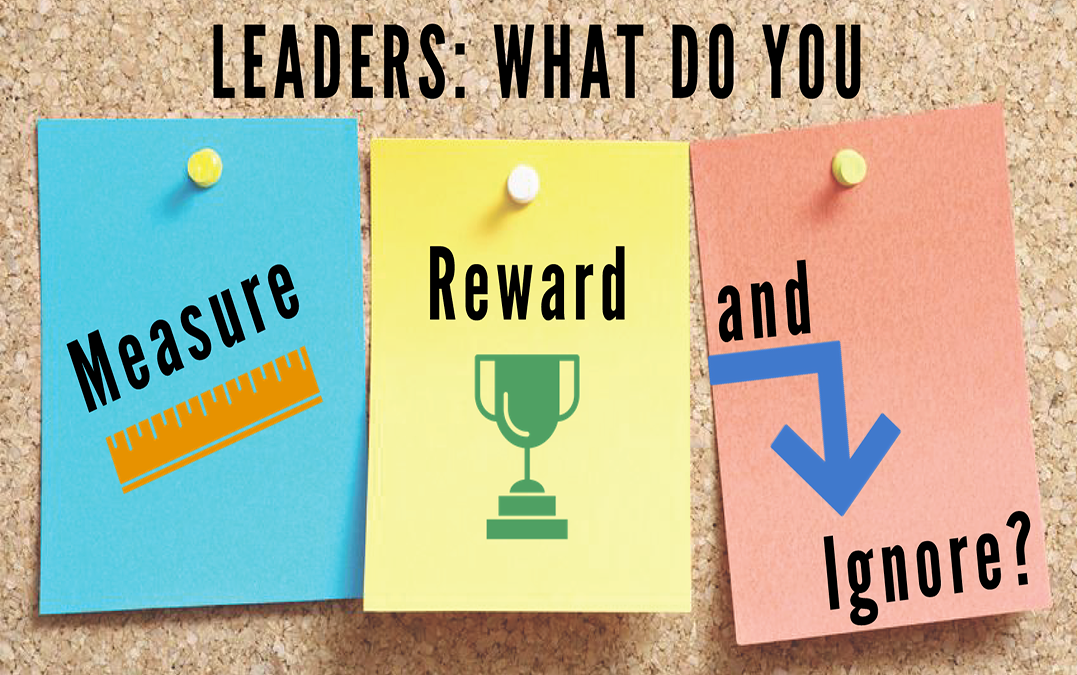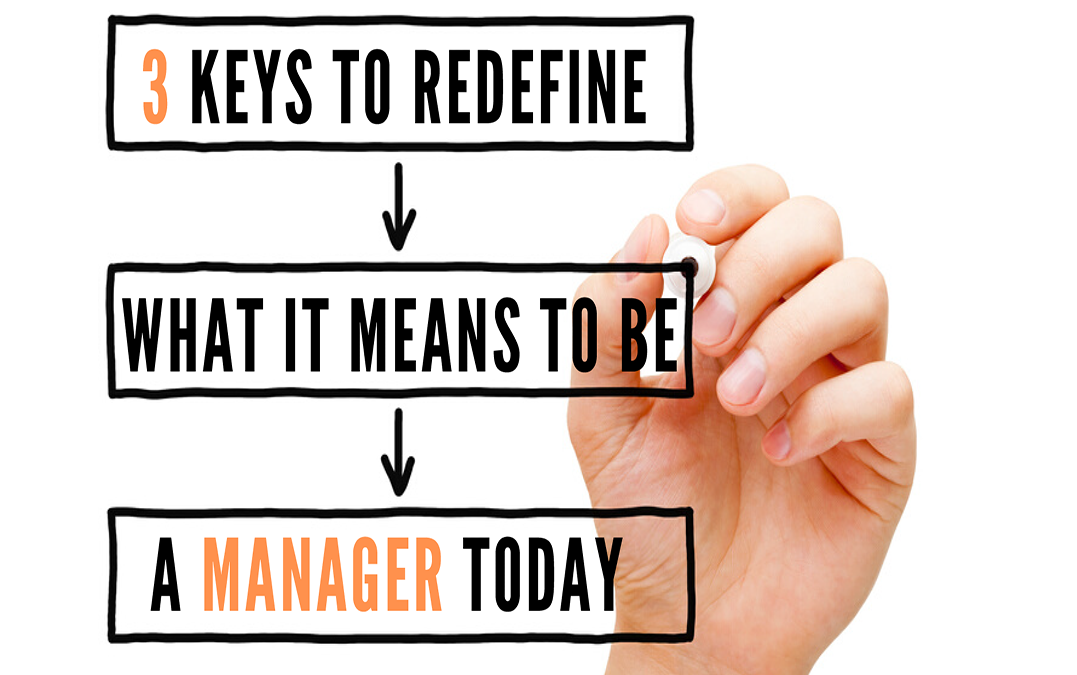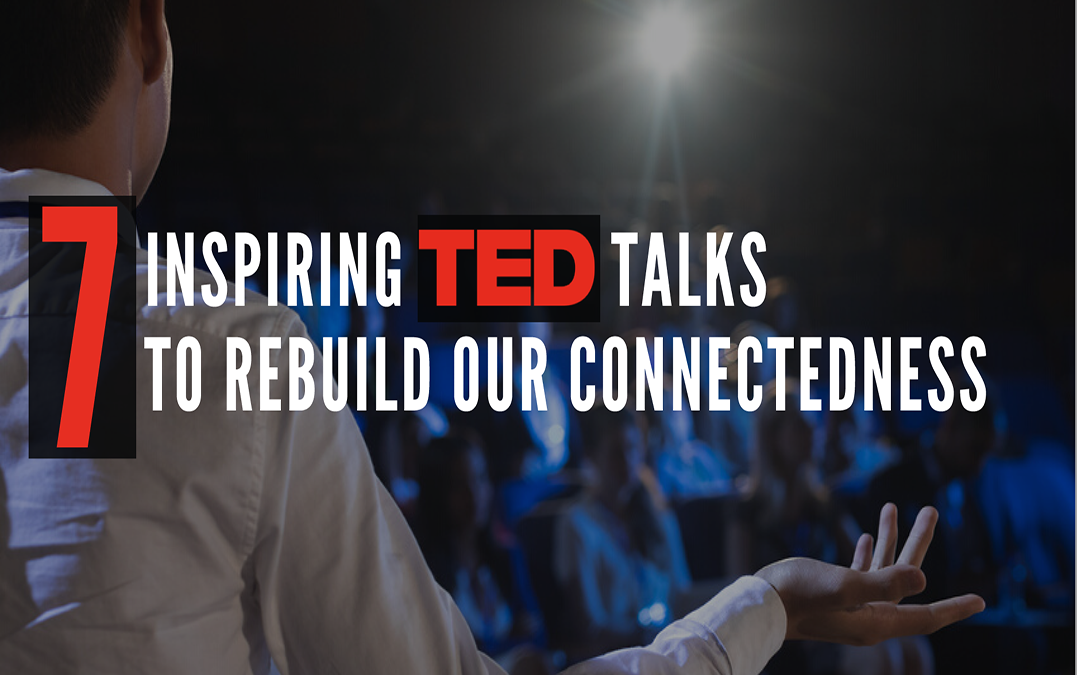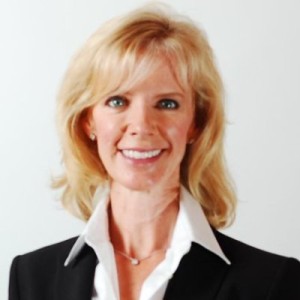
Leadership
Culture. What does that word actually mean?
Though many have tried, no one has ever landed on a fixed, universal definition for organizational culture. The subject has been vigorously debated from the pages of the Harvard Business Review to the halls of MIT Sloan. What is not debated is that culture is part of the DNA of every organization. Whether your organizational culture is empowering or toxic depends greatly on two factors: shared experience and modeled leadership.
Consider this. When new employees join your organization, they step in on Day 1 with a set of preconceived beliefs based on past experience. They may believe that markets are finite and there is only so much business to go around. They may believe that success is a win/lose proposition. Some have been taught that ethics and morals can be bent. Others have relied on the strict dictates of policies and procedures. That makes up the experience half of the equation.
The other half comes directly from modeled leadership. If the leaders of the organization are fixated on business development, channel expansion, and market domination, they are not likely spending any time intentionally trying to shape the culture. Unintentionally, however, they are sending very clear signals about what is important to them. They are the cultural architects of your organization and contribute three critical elements to the culture equation:
1. What is measured.
Let’s face it. Culture can be hard to measure. Senior executives tend to shy away from anything with a fuzzy ROI. Yet, whether you measure it or not, your culture is showing up in your bottom line. Skillfully managed cultures can be a performance multiplier. Recent research by the Great Place to Work© Institute found that companies that actively invest in workplace culture yield nearly 2x the return over their competitors. They also typically report 65% less voluntary turnover, saving an average of $3,500 per employee in recruiting and training costs. If culture isn’t part of your KPI mix, you’re sending the signal that it’s unimportant.
2. What is rewarded.
A recent study by O.C. Tanner found that employees report being recognized for their work as their most important motivator, over 20 times more than salary. Employees study what behaviors and achievements get rewarded, and naturally modify their work accordingly. Leaders who understand this connection create recognition programs that go beyond passing out paychecks. WD-40 CEO Garry Ridge proudly hosts the company’s annual People Choice Awards. Each year, heartfelt speeches are given by winners of coveted awards like “Best Mentor Coach” and “Best Team Player.” Leaders like Ridge know that coin-operated employees have no passion.
3. What is ignored.
Leaders are bombarded with data, hold back-to-back meetings, and field urgent requests on a daily basis. When we need to respond to fast-moving competitive situations, it is tempting to tap only our direct reports for feedback. In his Harvard Business Review article “The Focused Leader,” New York Times bestselling author Daniel Goleman warns that this temptation is dangerous. He recommends that leaders practice expanding their focus of awareness. “A failure to focus on others leaves you clueless, and a failure to focus outward may leave you blindsided,” Goleman writes. What’s worse, leaders who ignore input from those outside their immediate circle are signaling to the rest of the organization that their input is irrelevant.
Leaders are the cultural architects of your organization. The key metrics they pay attention to, the contributions they reward, and range of their awareness directly impact both your organizational culture and your bottom line.
Question: What do you measure, reward and ignore? How is that impacting your organizational culture?
Driven by the premise that excellence is the result of aligning people, purpose and performance, Center for Executive Excellence facilitates training in leading self, leading teams and leading organizations. To learn more, subscribe to receive CEE News!

Leadership
On Bloody Sunday, John Lewis wore a backpack. It carried fruit, a toothbrush, and two books. Lewis had expected to spend the night reading in jail. Instead, he spent it in the hospital after his skull was fractured from a police beating. He would carry the scars from that beating at age 25 for the rest of his life. He’d also carry out the rest of his life guided by the principles in the two books in his backpack that Sunday, March 7, 1965.
One book was The American Political Tradition, a reappraisal of this history of the United States written by Richard Hofstadter in 1948. The other book, also first published in 1948, was The Seven Storey Mountain, the autobiography of Catholic monk Thomas Merton and his journey to a life in Christ. It was Christ’s instruction to love thy neighbor that drew Lewis to Martin Luther King’s nonviolent message which they used to speak up against racial injustice in America.
How does a young man find the courage to sit before open hatred at lunch counters, and face police lines protected only by an ideal? In a word – love. The monk, Thomas Merton wrote,
Our job is to love others without stopping to inquire whether or not they are worthy. That is not our business and, in fact, it is nobody’s business. What we are asked to do is to love, and this love itself will render both ourselves and our neighbors worthy.
John Lewis left a legacy of love. Not a pollyannaish love, but a durable, tempered conviction that a belief in common humanity and the pursuit of equality will win in the end. “If we get it right here, in America, maybe, just maybe we can be the model for the rest of the world,” Lewis often said.
It’s hard not to judge others in this year triple underscored by racial, social, and political division. But doing so is what makes love so powerful. It’s value increased every time leaders like John Lewis endured physical blows and sacrifice in the name of equality. Lewis believed that America was worth the pain and sacrifice.
Lewis’ love filled him with irrepressible happiness despite all that he’d been through. His life is a monument to love. Now that his journey is over, his life is testimony to the power of love that speaks to us all. The political book in that backpack starts with a quote from the writer John Dos Passos:
In times of change and danger when there is a quicksand of fear under man’s reasoning, a sense of continuity with generations gone before can stretch like a lifeline across the scary present.
John Robert Lewis was that lifeline. His body will be put to rest, but his legacy of showing up, speaking out, and moving forward until, as Lewis said, “the revolution of 1776 is complete,” must carry on.
“If not us, then who? If not now, then when?” – John Lewis
Question: How can you use your platform to complete the revolution of 1776?
We have important work ahead of us as we stand up to racism, bias and inequity. Read an open letter our CEO wrote on our company’s commitment to shed light and work for justice.

Leadership
A study by Harvard Business School found that more than half of a manager’s time is spent on administrative tasks and only 7% of their time (about 2.8 hours per week) is spent on developing people and engaging with stakeholders. After engaging stakeholders, developing people is likely closer to 1 hour per week. This chronic lack of time spent on employee development is equivalent to the phenomenon known as ghosting which perpetuates both the quit rate and burnout rate. To break this cycle, the role and purpose of today’s managers must change in three fundamental ways:
From controlling to coaching. While the world’s workplaces have been going through extraordinary historical change, the practice of management has been stuck in time for more than 30 years. The new workforce — especially younger generations — wants their work to have deep mission and purpose, and they don’t want old-style command-and-control bosses. They want coaches who inspire them, communicate with them frequently and develop their strengths.
From deciding to delegating. Too many managers don’t let direct reports make decisions for fear that mistakes will take too much valuable time to correct. This tendency restricts employees’ ability to develop their thinking and decision making which is exactly what is needed to help organizations remain competitive. Today’s managers don’t need to be the smartest person in the room. They need to tap into the collective intelligence and draw out everyone’s best thinking.
From ‘what works’ to ‘what if’. Managers often encourage predictability. They want processes in place that can be referred to regardless of who is in the role. The problem with this management style is that it leads to perpetuating the status quo at the expense of what is possible. Today’s managers don’t need hired hands to turn raw materials into products. They need hearts and minds that are challenged to find better ways to operate, to discover ways to grow, and to reimagine how things have been done in the past.
Today’s managers play a critical role in helping your organization adapt to the new workplace demands. Help them succeed by reimagining them as coaches who encourage critical thinking and curiosity.
Question: Do your managers spend more time reporting to senior leaders or coaching emerging ones?
Driven by the premise that excellence is the result of aligning people, purpose and performance, Center for Executive Excellence facilitates training in leading self, leading teams and leading organizations. To learn more, subscribe to receive CEE News!

Leadership
The first six months of 2020 was a stress test on every system, structure, and social norm known to humanity.
The fear of a raging pandemic, combined with being trapped indoors or braving the disease as an essential worker for months tested our ability to deal with anxiety. Every person experienced loss – of a loved one, a job, or the ability to gather for weddings, funerals, birthdays, holidays, and graduations. Every person fought to keep their mental health in check while dealing with relentless bad news and unreliable leadership.
Our society is going through a hard reboot. We don’t know how long this reboot will last, but we have a choice about what it will yield, and whether we will let fear or hope shape our collective outcome. If we give in to fear, we’ll continue to let our behavior be dictated by our amygdala, the evolutionary part of our brains responsible for fight or flight in the face of danger. We’ll operate as though we’re in a war zone, and instantly assess whether every person, interaction, and social media post is a threat.
If we have hope that our better nature will prevail, we’ll have to override the steady diet of negativity that our amygdala feed on and rewire our neural networks in a process known as neuroplasticity. We’ll have to stop seeing our differences as a threat, and start rebuilding our curiosity and compassion. Sometimes it’s easy to think the worst of human beings and focus on the negative. But these inspiring TED talks can help us put down our shields, rebuild our connectedness, and have the courage to share our vulnerability.
 1. Depression, the secret we share by Andrew Solomon
1. Depression, the secret we share by Andrew Solomon
About the Talk: “The opposite of depression is not happiness, but vitality, and it was vitality that seemed to seep away from me in that moment.” In a talk equal parts eloquent and devastating, writer Andrew Solomon takes you to the darkest corners of his mind during the years he battled depression. That led him to an eye-opening journey across the world to interview others with depression — only to discover that, to his surprise, the more he talked, the more people wanted to tell their own stories.
About the Speaker: Andrew Solomon, Ph.D., is a writer and lecturer on politics, culture and psychology; winner of the National Book Award; and an activist in LGBTQ rights, mental health, and the arts. He is Professor of Clinical Medical Psychology (in Psychiatry) at Columbia University Medical Center, and a former President of PEN American Center.
 2. We don’t “move on” from grief. We move forward with it. by Nora McInerny
2. We don’t “move on” from grief. We move forward with it. by Nora McInerny
About the Talk: In a talk that’s by turns heartbreaking and hilarious, writer and podcaster Nora McInerny shares her hard-earned wisdom about life and death. Her candid approach to something that will, let’s face it, affect us all, is as liberating as it is gut-wrenching. Most powerfully, she encourages us to shift how we approach grief. “A grieving person is going to laugh again and smile again,” she says. “They’re going to move forward. But that doesn’t mean that they’ve moved on.”
About the Speaker: Nora McInerny is an American author. She writes about dealing with grief and loss, drawing on her personal experience of miscarrying a child and losing both her father and husband to cancer within several weeks in 2014.
 3. Embracing the shake by Phil Hansen
3. Embracing the shake by Phil Hansen
About the Talk: In art school, Phil Hansen developed an unruly tremor in his hand that kept him from creating the pointillist drawings he loved. Hansen was devastated, floating without a sense of purpose. Until a neurologist made a simple suggestion: embrace this limitation … and transcend it.
About the Speaker: Taking a cue from his own artistic journey, Phil Hansen challenges us to spark our creativity by thinking inside the box.
 4. An interview with the Queen of Creole Cuisine with Leah Chase and Pat Mitchell
4. An interview with the Queen of Creole Cuisine with Leah Chase and Pat Mitchell
About the Talk: Leah Chase’s New Orleans restaurant Dooky Chase changed the course of American history over gumbo and fried chicken. During the civil rights movement, it was a place where white and black people came together, where activists planned protests and where the police entered but did not disturb. In conversation with TEDWomen Curator Pat Mitchell, the 94-year old Queen of Creole Cuisine shared her wisdom from a lifetime of activism, speaking up and cooking.
About the Speaker: Leah Chase spent seven decades serving her signature gumbo and hospitality to everyone from Martin Luther King, Jr. to James Baldwin to Barack Obama.
 5. The other side of ego by Jonathan Gravenor
5. The other side of ego by Jonathan Gravenor
About the Talk: As he stared at the end of his life when diagnosed with cancer, Jonathan was hit with the fact he had become the kind of man he would not want to be near. Two remarkable people appeared and taught him life’s greatest lessons. That started him on the road to redemption that saved his soul.
About the Speaker: From war zones to Olympic games, from red carpets to national elections, if it was a big story, Jonathan Gravenor was there. For over two decades he was a foreign correspondent, a broadcast journalist, and presenter delivering the news to millions of people. In the world of journalism he had it all, that is until that all included cancer. Suddenly faced with the possibility of impending death, he was forced to look at who he was and what his legacy would be.
 6. I got 99 problems . . . palsy is just one of them by Maysoon Zayid
6. I got 99 problems . . . palsy is just one of them by Maysoon Zayid
About the Talk: “I have cerebral palsy. I shake all the time,” Maysoon Zayid announces at the beginning of this exhilarating, hilarious talk. “I’m like Shakira meets Muhammad Ali.” With grace and wit, the Arab-American comedian takes us on a tour of her adventures as an actress, stand-up comic, philanthropist and advocate for the disabled.
About the Speaker: Maysoon Zayid is an American actress and comedian. Of Palestinian descent, she is known as one of America’s first Muslim women comedians and the first person ever to perform stand-up in Palestine and Jordan.
 7. Abundance is our future by Peter Diamandis
7. Abundance is our future by Peter Diamandis
About the Talk: On stage at TED2012, Peter Diamandis makes a case for optimism — that we’ll invent, innovate and create ways to solve the challenges that loom over us. “I’m not saying we don’t have our set of problems; we surely do. But ultimately, we knock them down.”
About the Speaker: Peter Diamandis runs the X Prize Foundation, which offers large cash incentive prizes to inventors who can solve grand challenges like space flight, low-cost mobile medical diagnostics and oil spill cleanup. He is the chair of Singularity University, which teaches executives and grad students about exponentially growing technologies.
Question: What are you doing to stop seeing differences as a threat?
Driven by the premise that excellence is the result of aligning people, purpose and performance, Center for Executive Excellence facilitates training in leading self, leading teams and leading organizations. To learn more, subscribe to receive CEE News!

Letter from the Founder

Welcome to the fifty-ninth issue of CEE News!
At Center for Executive Excellence, our mission is to take you from what is to what is possible. Whether we’re helping leaders implement culture transformation, helping teams build trust, or coaching individual executives to accelerate professional growth, our goal is to offer our expertise to effect positive change. That’s our wheelhouse. That’s our safe space.
Today, we’re stepping out of our safe space because the collective what is is broken. To move from what is to what is possible, we must stand up for one another as members of the human race. We must stop ignoring the fact that the human race has devolved into a competition for domination based on skin color. We can no longer see something like the senseless killing of George Floyd, offer thoughts and prayers to the family, and retreat to our circle of safety.
(more…)












